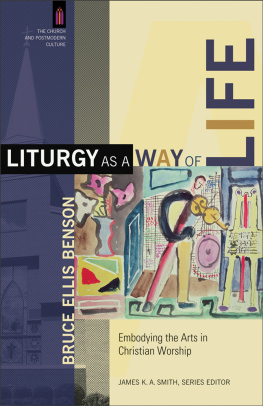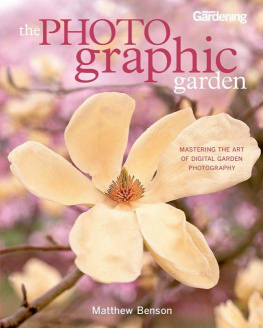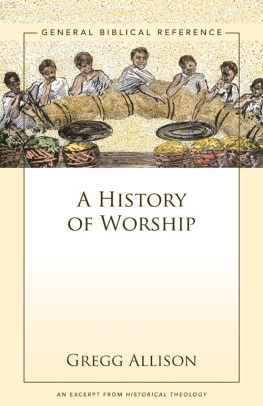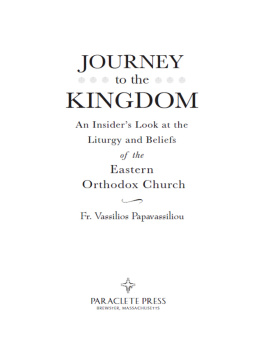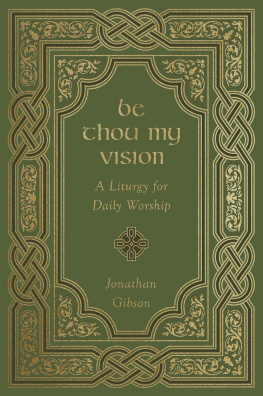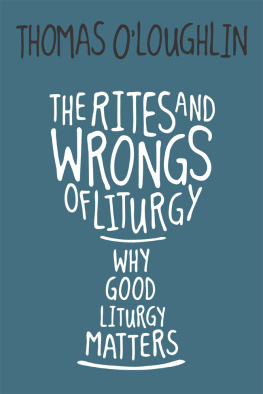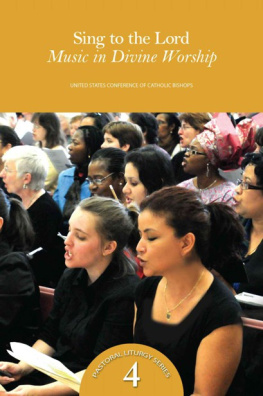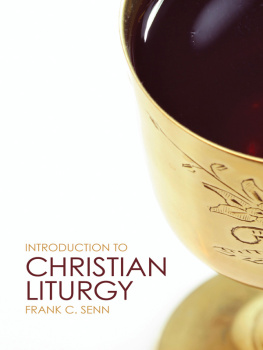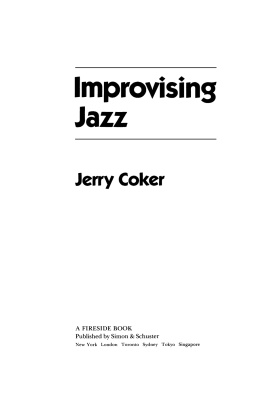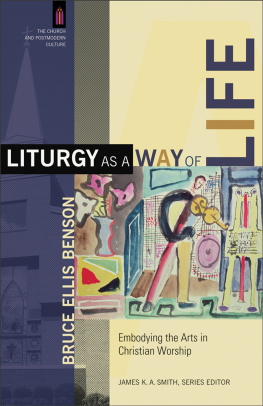Benson - Liturgy as a way of life: embodying the arts in Christian worship
Here you can read online Benson - Liturgy as a way of life: embodying the arts in Christian worship full text of the book (entire story) in english for free. Download pdf and epub, get meaning, cover and reviews about this ebook. City: Grand Rapids;MI, year: 2013, publisher: Baker Publishing Group;Baker Academic, genre: Religion. Description of the work, (preface) as well as reviews are available. Best literature library LitArk.com created for fans of good reading and offers a wide selection of genres:
Romance novel
Science fiction
Adventure
Detective
Science
History
Home and family
Prose
Art
Politics
Computer
Non-fiction
Religion
Business
Children
Humor
Choose a favorite category and find really read worthwhile books. Enjoy immersion in the world of imagination, feel the emotions of the characters or learn something new for yourself, make an fascinating discovery.
- Book:Liturgy as a way of life: embodying the arts in Christian worship
- Author:
- Publisher:Baker Publishing Group;Baker Academic
- Genre:
- Year:2013
- City:Grand Rapids;MI
- Rating:4 / 5
- Favourites:Add to favourites
- Your mark:
- 80
- 1
- 2
- 3
- 4
- 5
Liturgy as a way of life: embodying the arts in Christian worship: summary, description and annotation
We offer to read an annotation, description, summary or preface (depends on what the author of the book "Liturgy as a way of life: embodying the arts in Christian worship" wrote himself). If you haven't found the necessary information about the book — write in the comments, we will try to find it.
Liturgy as a way of life: embodying the arts in Christian worship — read online for free the complete book (whole text) full work
Below is the text of the book, divided by pages. System saving the place of the last page read, allows you to conveniently read the book "Liturgy as a way of life: embodying the arts in Christian worship" online for free, without having to search again every time where you left off. Put a bookmark, and you can go to the page where you finished reading at any time.
Font size:
Interval:
Bookmark:

Also available in the series
Merold Westphal, Whose Community? Which Interpretation? Philosphical Hermeneutics for the Church
James K. A. Smith, Whos Afraid of Postmodernism? Taking Derrida, Lyotard, and Foucault to Church
John D. Caputo, What Would Jesus Deconstruct? The Good News of Postmodernism for the Church
Carl Raschke, GloboChrist: The Great Commission Takes a Postmodern Turn
Graham Ward, The Politics of Discipleship: Becoming Postmaterial Citizens
Daniel M. Bell Jr., The Economy of Desire: Christianity and Capitalism in a Postmodern World
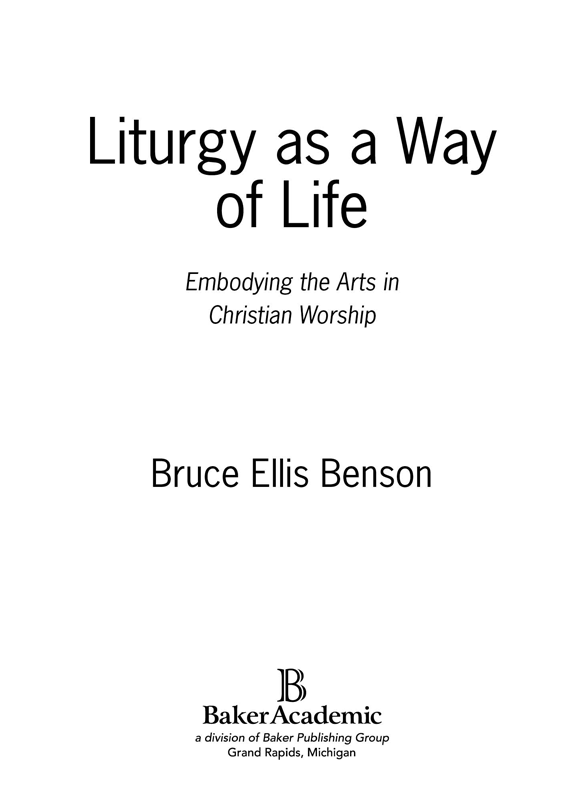
Cover
Series Page
Title Page
Copyright Page
Series Preface
Series Editors Foreword
Preface
Introduction: The Art of Living
1. The Call and the Response
2. Deconstructing the Discourse of Art
3. Improvising like Jazz
4. On Not Being an Artistic Whore
5. Becoming Living Works of Art
Notes
Index
Back Cover
Current discussions in the churchfrom emergent postmodern congregations to mainline missional congregationsare increasingly grappling with philosophical and theoretical questions related to postmodernity. In fact, it could be argued that developments in postmodern theory (especially questions of post-foundationalist epistemologies) have contributed to the breakdown of former barriers between evangelical, mainline, and Catholic faith communities. Postliberalisma related effect of postmodernismhas engendered a new, confessional ecumenism wherein we find nondenominational evangelical congregations, mainline Protestant churches, and Catholic parishes all wrestling with the challenges of postmodernism and drawing on the culture of postmodernity as an opportunity for rethinking the shape of our churches.
This context presents an exciting opportunity for contemporary philosophy and critical theory to hit the ground, so to speak, by allowing high-level work in postmodern theory to serve the churchs practiceincluding all the kinds of congregations and communions noted above. The goal of this series is to bring together high-profile theorists in continental philosophy and contemporary theology to write for a broad, nonspecialist audience interested in the impact of postmodern theory on the faith and practice of the church. Each book in the series will, from different angles and with different questions, undertake to answer questions such as, What does postmodern theory have to say about the shape of the church? How should concrete, in-the-pew and on-the-ground religious practices be impacted by postmodernism? What should the church look like in postmodernity? What has Paris to do with Jerusalem?
The series is ecumenical not only with respect to its ecclesial destinations but also with respect to the facets of continental philosophy and theory that are represented. A wide variety of theoretical commitments will be included, ranging from deconstruction to Radical Orthodoxy, including voices from Badiou to iek and the usual suspects in between (Nietzsche, Heidegger, Levinas, Derrida, Foucault, Irigaray, Rorty, and others). Insofar as postmodernism occasions a retrieval of ancient sources, these contemporary sources will be brought into dialogue with Augustine, Irenaeus, Aquinas, and other resources. Drawing on the wisdom of established scholars in the field, the series will provide accessible introductions to postmodern thought with the specific aim of exploring its impact on ecclesial practice. The books are offered, one might say, as French lessons for the church.
J AMES K. A. S MITH
When philosophers and theologians engage postmodernism, they tend to spend their time debating arcane matters of epistemology, hermeneutics, and metanarratives. Meanwhile, a kind of practical postmodernism has emerged in the contemporary church in other, more tangible ways. One can read the renewal of the arts in the churchincluding new concerns about the arts in worshipas evidence that Christianitys complicity with modernity might be waning, at least in some respects.
Over the past couple of centuries, the churchs worshipperhaps especially in Protestant evangelicalismunwittingly mimicked the rationalism (and dualism) of modernity. Assuming with Descartes that humans are primarily thinking things, worship has been centered on didactic teaching. A few songs merely function as a preface to a long sermon, the goal of which is the dissemination of information to brains-on-a-stick, sitting on their hands. The body has no role in such worship; it is worship for the proverbial brains-in-a-vat of philosophical fame. And because the body has no essential role in such worship, there is also no place for the arts, which are inherently sensible, even sensual. One can sense this in the pragmatism of church architecture, or the stark minimalism of interior design in Protestant churches, where the only adornment was often scriptural texts emblazoned on the walls. In rationalist worship spaces, even the wallpaper is didactic.
Such rationalist worship also tends to not have any real place for the Eucharist. Indeed, I think one can generally note a correlation between the centrality of the Eucharist in worship and an appreciation for the materiality that underwrites the arts. So whats lost in modernity and our unwitting adoption of rationalism is just the sort of sacramentality that undergirds Christian affirmation of the bodythe same sensibility that values the arts. The metaphysics of modernity flattens the world, reducing human persons to information processors. And if we buy into this, we will worship accordingly. The didactic will trump the affective; the intellect will crowd out the imagination; the body will be present as only a vehicle to get the mind in the pew. Welcome to the cathedral of Descartes.
But just as evangelicals are rediscovering the sacramental imagination that is carried in the liturgical tradition, they are also beginning to appreciate the importance of the artsin culture and in worship. Both of these trends, I would suggest, are the fruit of our discomfort with the rationalist model and testify to its implosion. As such, both developments are also a kind of postmodern critique in practice . To appreciate the arts is to appreciate that we are more than thinking things. To recover the arts is to remember that we have bodieswhich is to remember what Christians knew well before modernity. So we are now seeing an explosion of centers, institutes, conferences, and books devoted to arts and worship. More and more congregations are intentionally incorporating the arts into worshipincluding a range of forms, from visual art to liturgical dance, on top of an explosion of new music. Granted, much of this might simply function as ornamentation of a model that is still largely didactic and rationalist. But there is an intuition at work here that unsettles our modern habits.
So there is good reason to celebrate and affirm this newfound interest in the arts, particularly for those of us who have seen postmodernism as a kind of demodernizing discipline to help the church awake from its modern slumbers, thereby opened to recover the ancient treasury of the churchs formative practices. This is what Robert Webber described as an ancient-future sensibility: resources for a postmodern future found in the buried treasures of an ancient heritage.
In this book, Bruce Ellis Benson shares the same intuition about a link between liturgy and the arts (and vice versa). So one could hope that a new appreciation for the arts in the church might be a kind of sacramental gateway drug that draws congregations to liturgical renewal. Conversely, one could hope that those congregations that are intentionally recovering the rich panoply of the churchs liturgical practices might thereby consider how the arts are characterized by the same affective imaginativity.
Font size:
Interval:
Bookmark:
Similar books «Liturgy as a way of life: embodying the arts in Christian worship»
Look at similar books to Liturgy as a way of life: embodying the arts in Christian worship. We have selected literature similar in name and meaning in the hope of providing readers with more options to find new, interesting, not yet read works.
Discussion, reviews of the book Liturgy as a way of life: embodying the arts in Christian worship and just readers' own opinions. Leave your comments, write what you think about the work, its meaning or the main characters. Specify what exactly you liked and what you didn't like, and why you think so.

